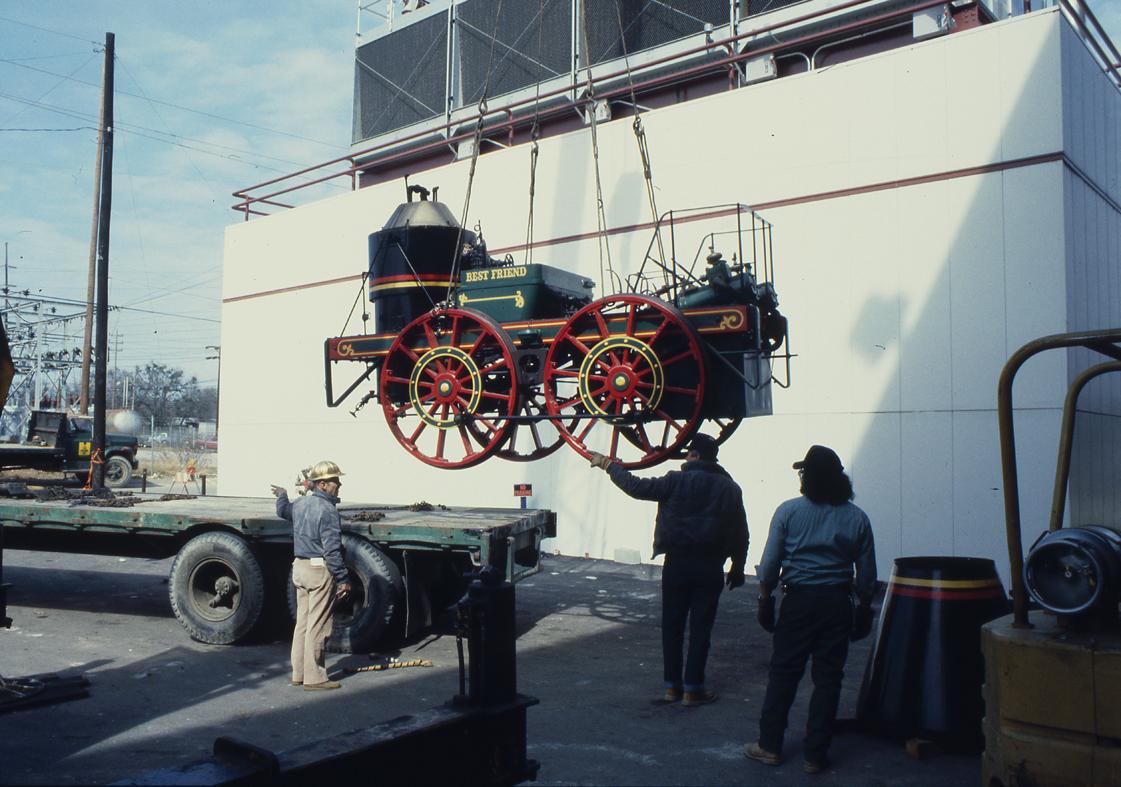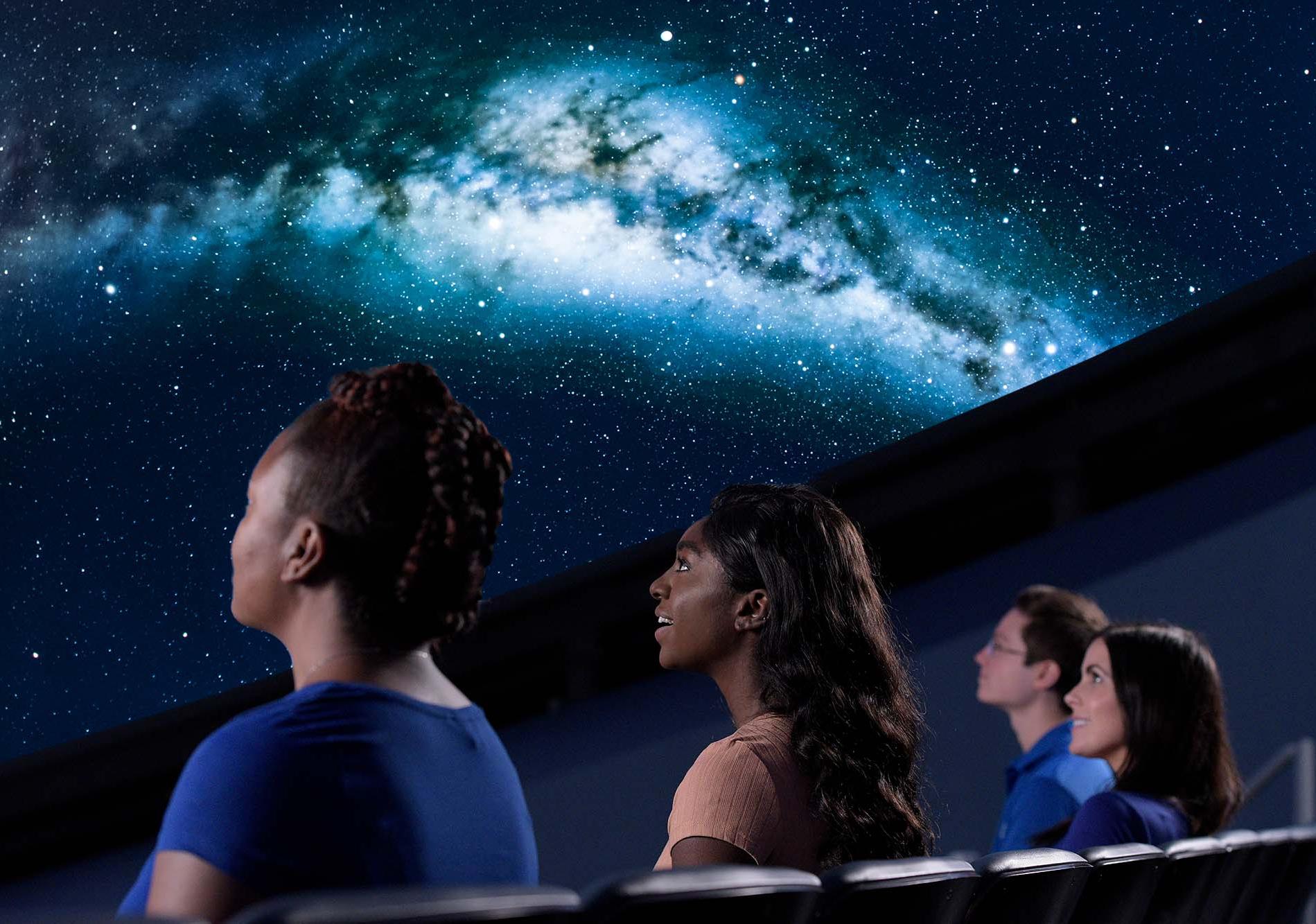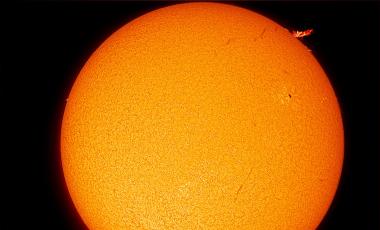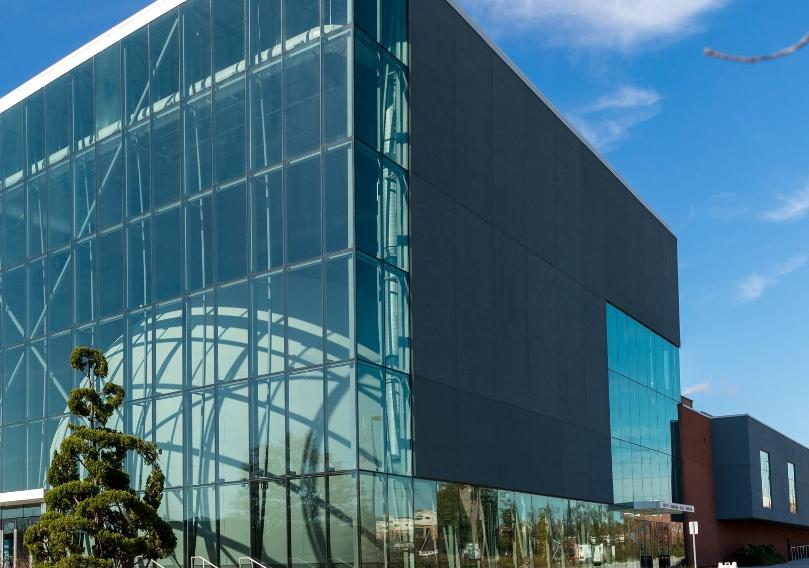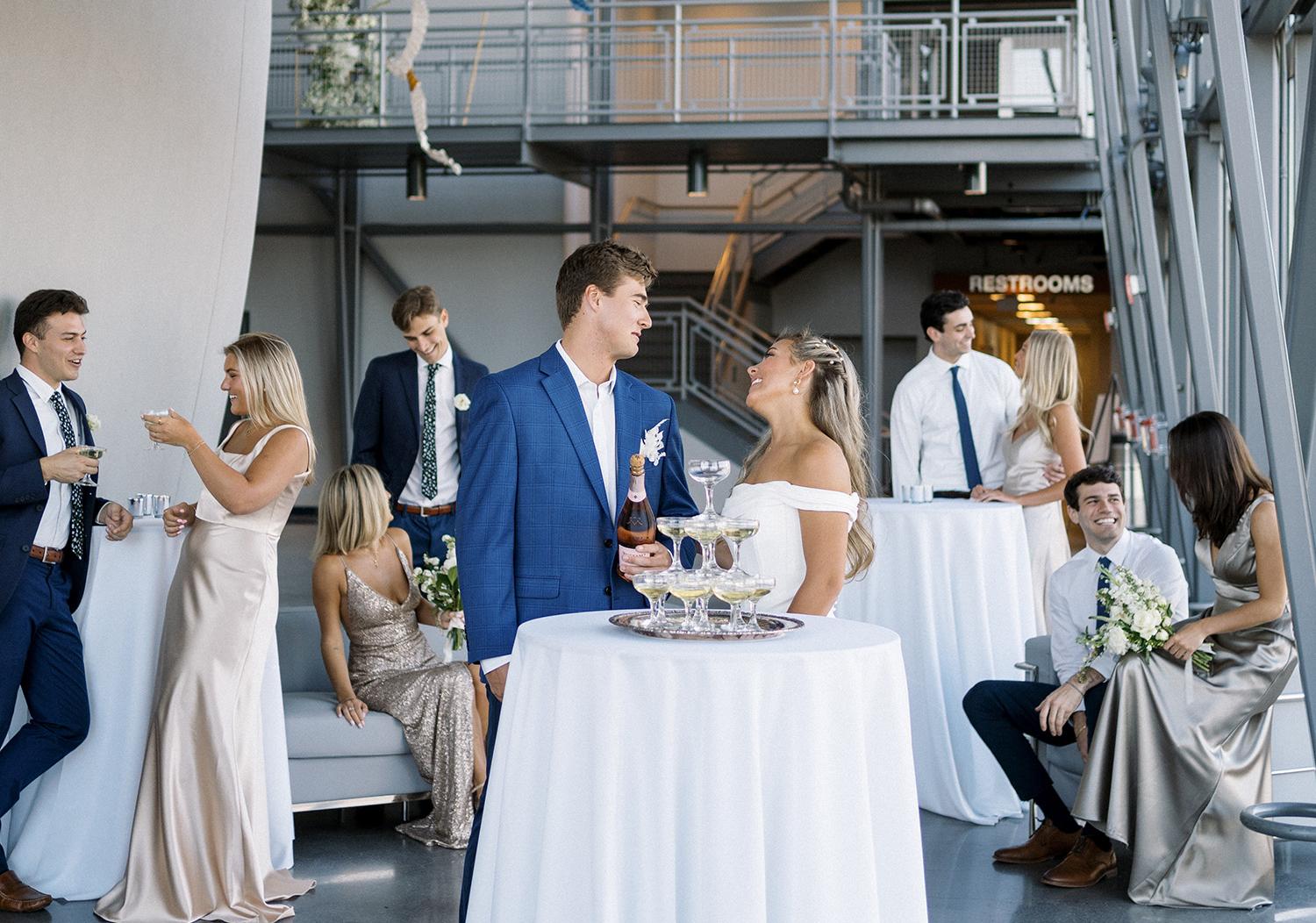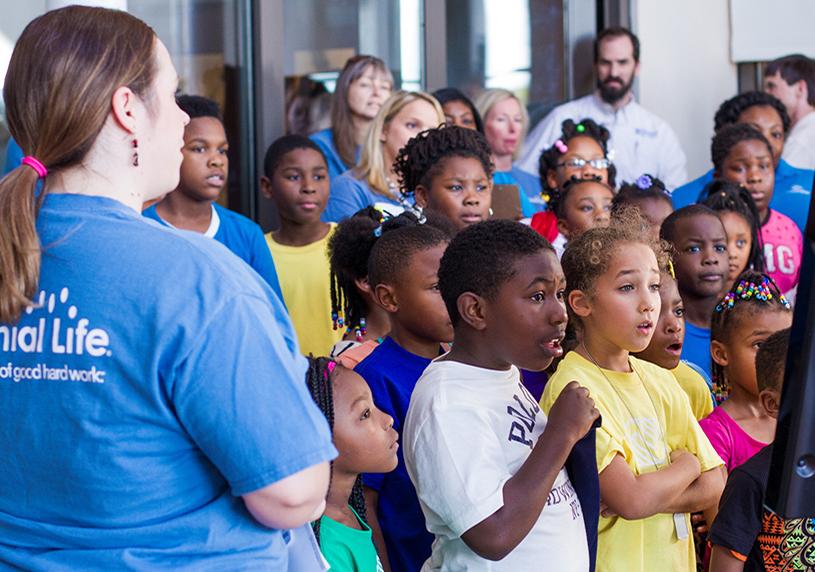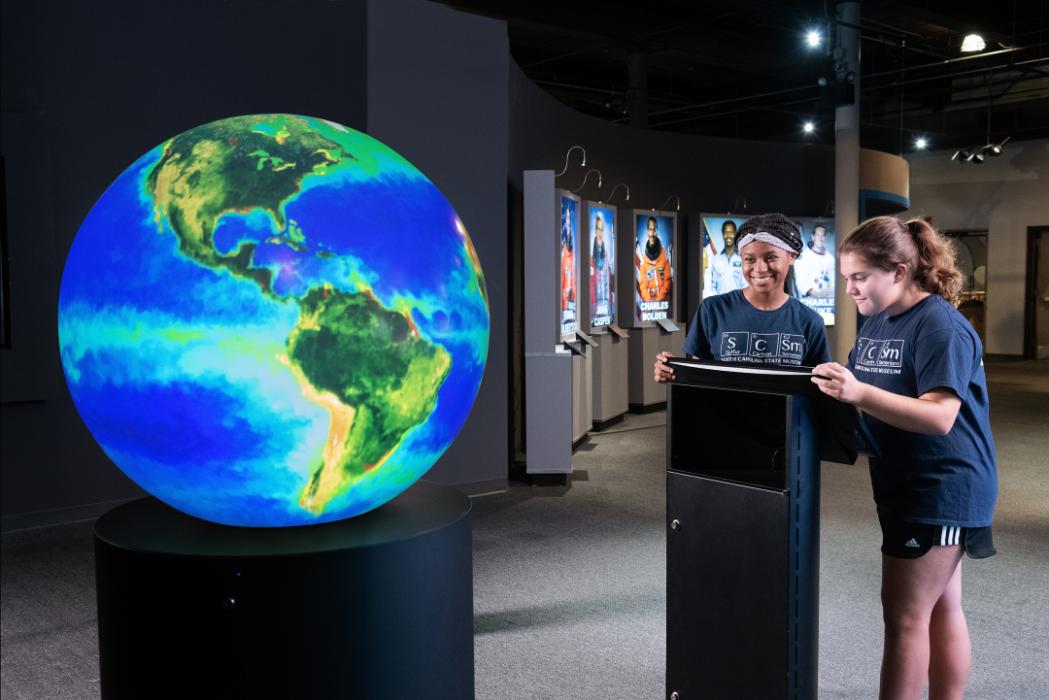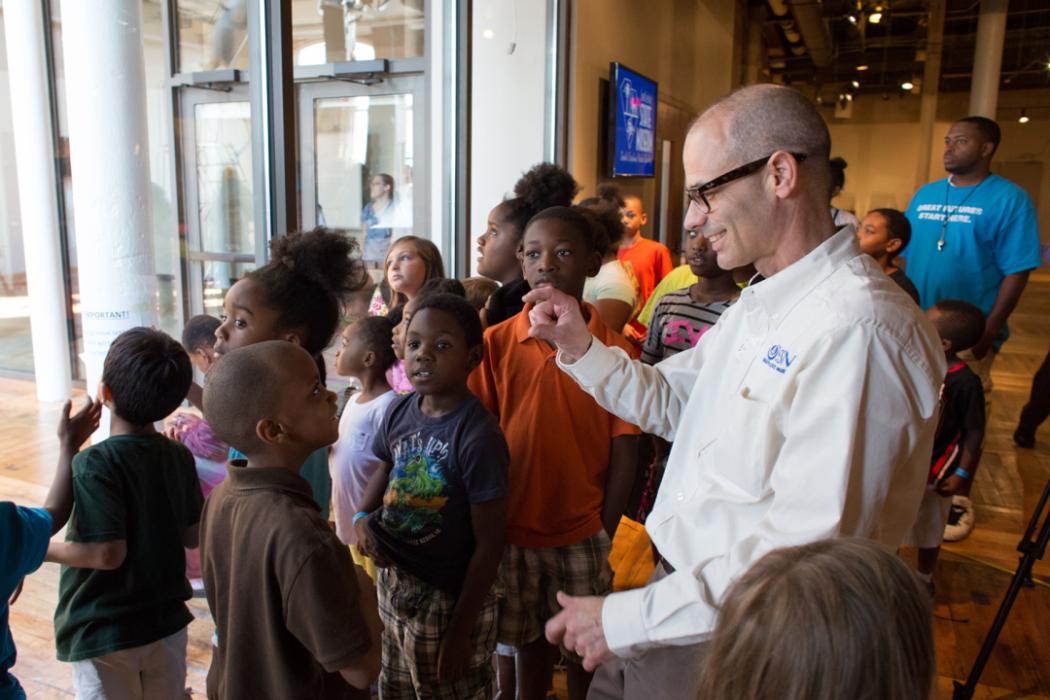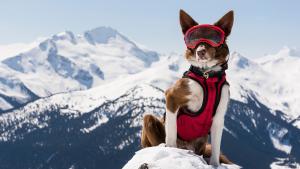
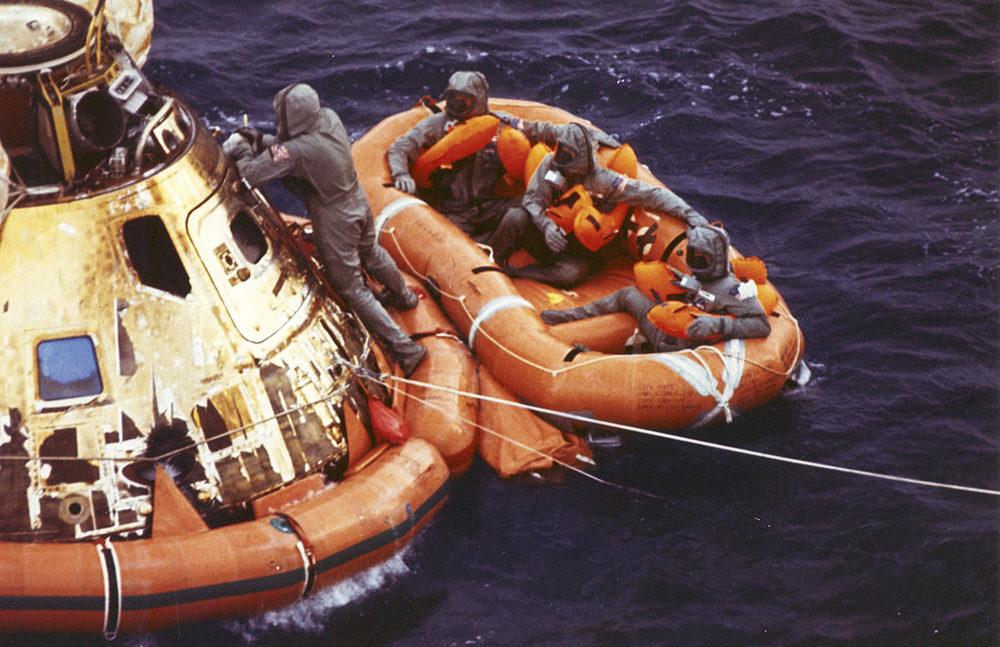
Apollo 11 splashdown photographed by Milt Putnam.
50 Years ago the crew of Apollo 11 splashed down in the South Pacific after their historic 195 hour mission to the lunar surface. One of the crucial components of the Apollo 11 mission was that astronauts going to the moon would be safely returned. Not only did this require complex spacecraft and technology that could withstand temperatures of 5000 degrees F, flying 11 kilometers per second, but it also required coordination with the Navy. It was too risky to land the spacecraft on land, potentially putting the astronauts and civilians in harm’s way. Thus NASA and the U.S. Navy opted to recover Apollo spacecraft after landing in the Atlantic or Pacific oceans.
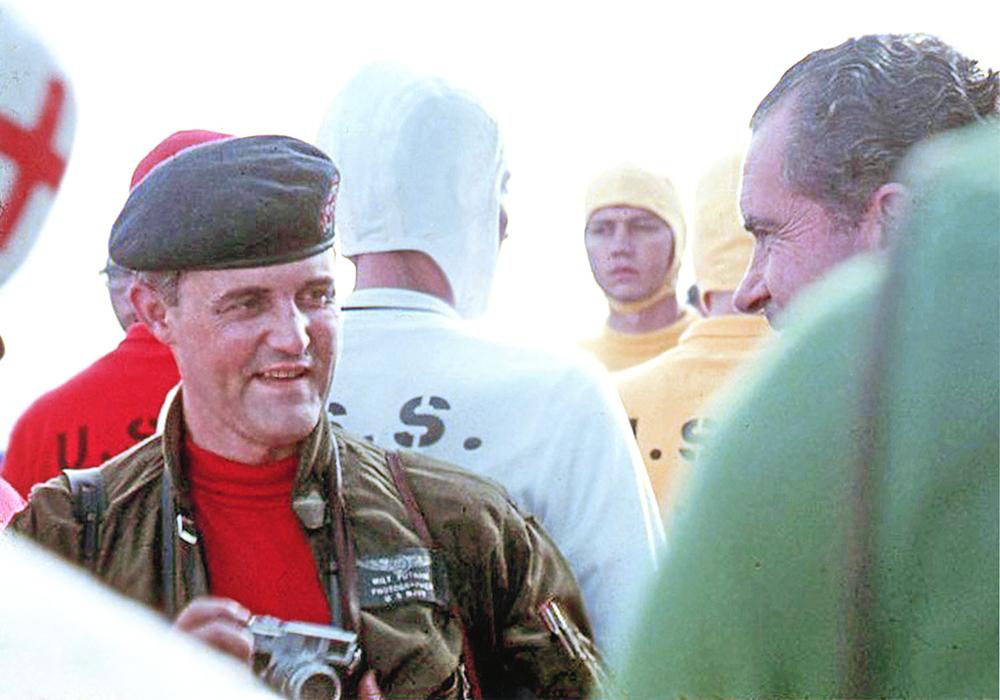
President Richard Nixon and photographer Milt Putnam after the recovery of the Apollo 11 crew.
In order to document their recovery, NASA and the U.S. Navy assigned SC native, Thomas ‘Milt’ Putnam, a senior Navy photographer to capture the daring rescue. Previously assigned to Helicopter Anti-Submarine Squadron 4, Putnam spent six months serving in Vietnam. His main job was to photograph helicopter operations like search and rescue missions before receiving a new assignment stateside. Putnam returned to Imperial Beach, California to train for photographing the Apollo recovery missions. This required him to photograph the capsule’s descent into the ocean from a Navy helicopter, the astronauts exiting the capsule and boarding the Navy vessel.
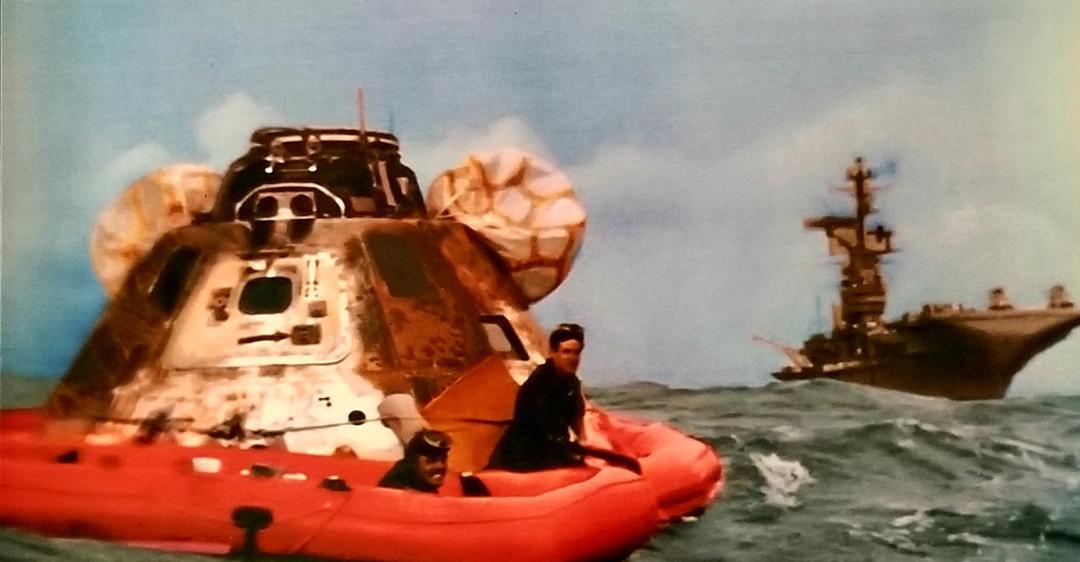
As a Navy Seal, Robert Coggin helped recover Apollo spacecrafts including Apollo 8.
Once the spacecraft landed in the water, Navy SEAL divers, immediately dove into the water and attached flotation devices to steady the capsules in rough seas. They helped the astronauts into rafts, then hoisted them into a helicopter hovering above. The Navy SEALs then secured the Apollo capsule to a crane which lifted the spacecraft onto the deck of the rescuing vessel. The process took less than an hour, but required a lot of practice and precision. Columbia, SC native Robert Coggin was one of many Navy SEALs that helped recover Apollo spacecrafts and can be seen assisting in a recovery mission in one of the photos taken by Putnam.
